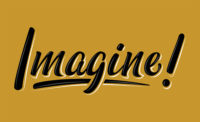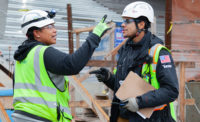More than ever before, organizations need the best possible ideas as they envision, design, engineer and build America’s transportation infrastructure. Project funding is tighter, client expectations are higher, and technologies are challenging everyone to adapt at an ever-faster pace. That’s why innovation has become the industry’s mantra from coast to coast, in major cities and small towns alike.
Innovation is tough to achieve if leaders aren’t inviting people with fresh perspectives to the table. If a team has been largely static, with few new members for many years, there’s a risk it will apply old paradigms to new challenges. This is why I—and many others—believe that pursuing innovation and diversity are part of the same effort.
Diversity—in gender, race and culture, as well as thought, experience and age—is an often-untapped resource that can drive us toward the next generation of solutions.
As you may know, the transportation industry has made headway in removing barriers to success for women and minorities. I’m grateful for all the forward-thinking government programs and the people who have tirelessly advocated to create greater opportunities for everyone in this sector. Clearly, we’re doing a lot of the right things.
What’s unfortunate is that the advancement of diversity in transportation has traditionally been positioned as an obligation—a requirement—rather than as the competitive advantage it truly is.
The language surrounding diversity has tended to focus on “leveling the playing field” and “taking care of” or “giving a hand up” to people with diverse backgrounds.
Meanwhile, the act of engaging with minority-owned businesses has for too long been focused on how to meet regulations, calculate the ideal percentages of contract work and check the right boxes. It’s been a numbers approach, not an innovation approach, and it has failed to recognize the extraordinary advantages of assembling a vibrant, diverse project team.
I believe that it’s time to reframe the conversation about diversity so that it will be perceived not merely as an obligation, but rather as a competitive advantage. In other words, it’s time to reframe “This is something I must do to win the contract” to something more like “This is how I can differentiate my company and give my client the best possible solutions.”
When we begin to welcome diverse people and ideas to the table, it can generate breakthrough thinking that improves project results, engages community stakeholders and builds the foundation for future collaboration.
Here are a few examples of this philosophy in action.
Detroit’s I-94 Modernization Project
Small business consultants in Detroit, many of them minority-owned, are playing a more important role in the $3-billion I-94 Modernization Project, thanks to the Michigan Dept. of Transportation and a novel small business development program.
Through the program, small business owners learn how to win, contract and deliver meaningful design and construction oversight work for MDOT. The program provides just-in-time training, mentorship and facilitated workshops on essential management skills.
Meanwhile, program participants draw on their local knowledge to refine the design and help oversee construction while working at a co-located office in Detroit. The program has received positive feedback on the overall training and workshops, as well as its advancement of diversity and inclusion, both through the market entry of small businesses and connections with more established businesses that have previously worked with MDOT.
Toll Relief in Virginia
Many states are grappling with the challenge of how to make tolls more affordable for people with limited financial means. The Virginia Dept. of Transportation had to tackle this issue when it created tolling strategies for the Elizabeth River Tunnels, widely used by residents of Norfolk and Portsmouth.
Rather than create a plan and then seek buy-in, VDOT created an unprecedented team of stakeholders—political leaders, community leaders, business owners, local users, commuters, military representatives, technical experts and others. Working together, they built a framework for providing discounts to tollpayers based on an individual’s financial need. They also reached out to local users to help them apply for discounts and acquire transponders.
Washington, D.C.’s 11th Street Bridge Replacement
When the District Dept. of Transportation was planning to replace the 11th Street Bridge, it saw an opportunity to reimagine the project through a broader lens than simply improving traffic flow over the Anacostia River.
The agency brought a highly diverse group of stakeholders to the table by creating a community outreach and communication group (11th Street Community Communication Committee). Unlike groups that focus primarily on public outreach and education, this one also targeted design features that would improve the community, one in which many residents are financially disadvantaged.
This outreach helped create the city’s first elevated public park, which will be located on the piers of the old bridge and provide new spaces for recreation, environmental education and the arts.
These are just a few examples of the work that’s taking place across the country as public and private sectors collaborate to make transportation infrastructure deliver increased value to communities.





Post a comment to this article
Report Abusive Comment